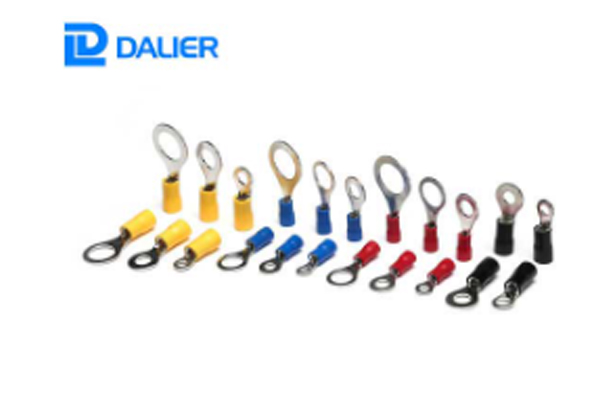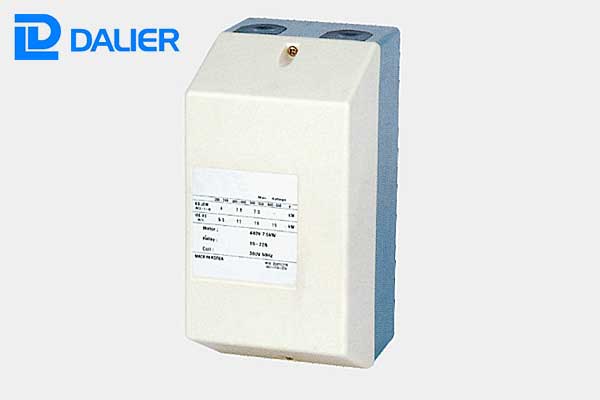What are Ring and Spade Terminals
Electrical connections are the backbone of modern systems, and terminals play a critical role in ensuring reliable and safe power transfer. Two widely used types are ring terminals and spade terminals, each designed for specific applications. This article explores their definitions, key differences, and how to choose between them.
Definition and structural features
1. Ring Terminal
Definition: A ring terminal is a metal terminal with a closed ring at the end and a drilled hole in the center. It is usually fixed to the terminal with screws or bolts.
Structure:
Ring part: A closed metal ring that ensures full contact with the terminal to reduce the risk of loosening.
Crimp barrel: Used to crimp wires. Common specifications are distinguished by wire diameter (such as 22-16 AWG) and hole diameter (such as M3-M8).
Insulating sheath (optional): Color coding (such as red for 16-14 AWG) provides insulation protection.
2. Spade Terminal
Definition: The end of the spade terminal is a fork-shaped opening, shaped like a spade, which can be directly inserted into a screw or socket for quick plugging and unplugging.
Structure:
Fork interface: U-shaped or Y-shaped opening, adapted to screw heads or slots.
Crimp barrel: Similar to the ring terminal, but the design focuses more on flexibility.
Insulation sheath (optional): mostly made of nylon or PVC, some models support heat shrink tubing reinforcement.
Core Differences
| Features | Ring terminal | Spade terminal |
| Connection method | The screw passes through the ring to fix it, and needs to be tightened | The fork is directly inserted into the screw/socket, supporting quick plugging and unplugging |
| Contact area | The ring is fully surrounded, with a large contact area | Local contact, relying on plug-in tightness |
| Vibration resistance | High (not easy to loosen) | Medium-low (may be displaced due to vibration) |
| Applicable scenarios | Permanent fixation (such as distribution cabinets) | Occasions that require frequent maintenance (such as automotive circuits) |
| Installation complexity | High (screws need to be removed) | Low (direct insertion is sufficient) |
How to choose the right terminal?
1. Choose according to the application scenario
Applicable situations of ring terminals:
High vibration environment (such as motors and generators).
Large current transmission (large contact area and low resistance).
Permanent installation (no need for frequent disassembly).
Applicable situations of spade terminals:
Systems that require quick maintenance (such as car audio and industrial sensors).
Space-constrained areas (fork-shaped design is easier to align).
Medium current load (need to ensure good contact after plugging and unplugging).
2. Matching electrical parameters
Current capacity: Ring terminals usually carry higher currents (such as more than 10A), and spade terminals need to be evaluated based on the thickness of the fork.
Wire diameter and hole diameter: Select a crimping barrel that matches the cross-sectional area of the wire (such as 12 AWG wire with red terminals), and ensure that the terminal hole diameter is adapted to the screw size.
3. Material and process considerations
Material: Pure copper or tinned copper can prevent oxidation, and stainless steel is suitable for corrosive environments.
Crimping quality: Use professional crimping tools to ensure there is no gap after crimping to avoid heat generation due to false connection.
Insulation requirements: Choose heat-resistant sheath (such as silicone) for high temperature environment and waterproof design for humid environment.
Conclusion
Ring and spade terminals are essential for electrical systems, but their applications diverge based on design and functionality. Ring terminals excel in high-vibration, high-current environments requiring permanent connections, while spade terminals offer flexibility and ease of use in low-power, accessible settings. By evaluating factors like environment, current load, and installation needs, you can select the right terminal to ensure reliable and efficient electrical performance. Always prioritize quality materials and compliance with industry standards for optimal safety and longevity.




